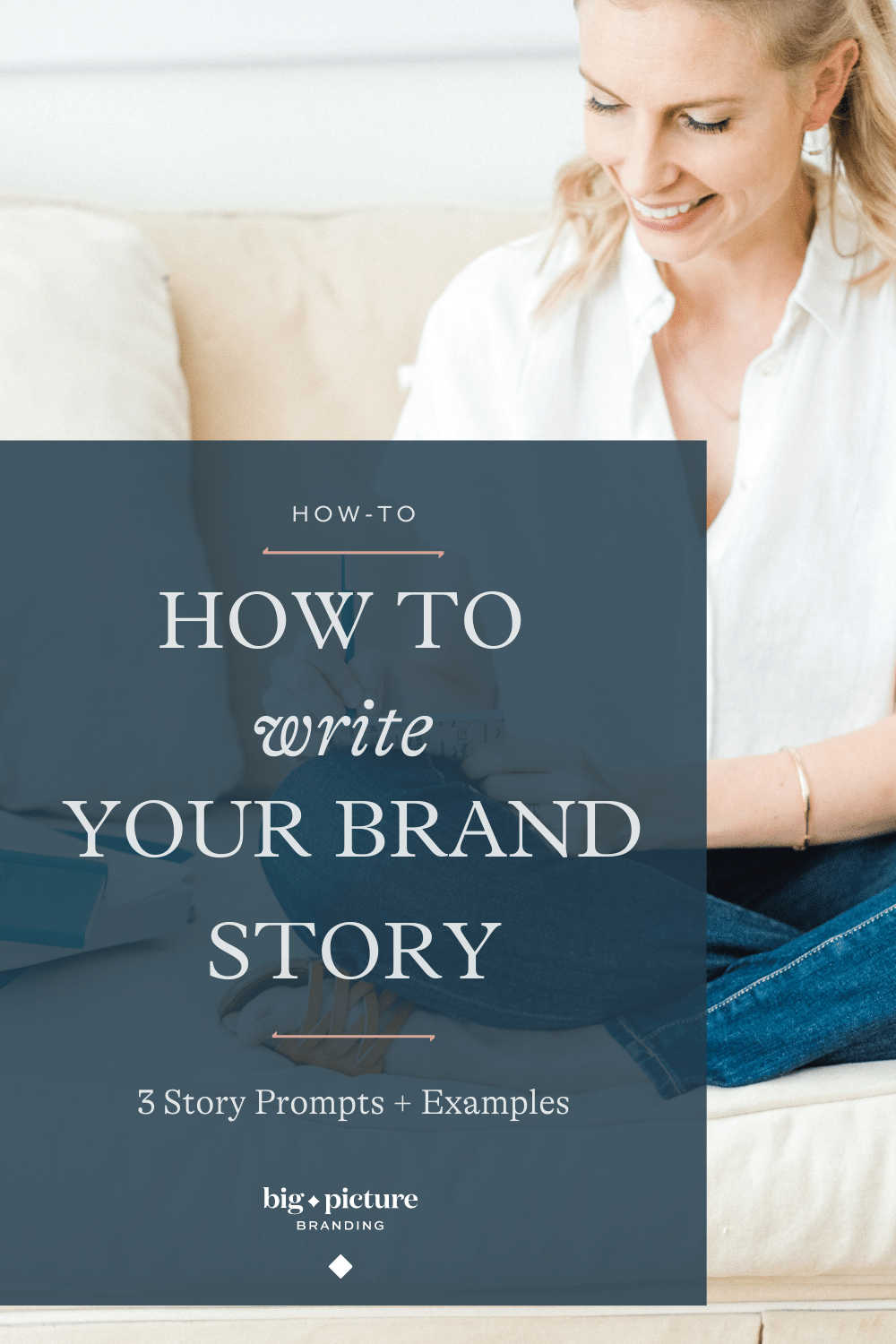Whenever I poll my readers, “How do I write my brand story” is the question with off-the-chart responses. Answering this question makes me giddy inside because writing your brand story requires the perfect blend of brand strategy and copywriting.
[And if you’re not quite sure what a brand story actually is, make sure this post is your next read! (Don’t worry, it’ll open up in a new tab so you won’t lose your place in this post.)]
Hear me out: Our brains are hardwired to listen to stories because they relay important information. Back in our caveperson days, stories helped us build social networks imperative to our survival. Story is in our DNA and according to historians, it’s what makes us successful as a species.
So if storytelling helps us helps understand and relate to each other, what are the most effective ways to pique your audience’s interest and write your story?
Keep reading to learn:
-
Who’s the narrator and who’s the hero of your story
-
3 brand story prompts
-
3 brand story examples
Who’s who?
I won’t beat around the bush. The Hero of your story is your audience, not you. You are just the guide whose job it is to help the hero get to where they want to go. Your story serves as both the positioning statement and social proof in the mind of your ideal client or customer (see what I mean about the strategy bit?)
Make sure you know who your audience is and how what you offer intersects with what they want/need/desire.
(I’ve got a quick and simple tool to help you get clear on your audience personas and narrow down your key messaging points here.)
Now, once you know who you’re talking to, you can pick up your pen (or keyboard) and start the writing process.
The origin story
PROMPTS:
-
What was the problem you saw in the world that you realized you had the power to solve?
-
How does your past help your audience’s present?
-
How does your journey or experience benefit your audience?
EXAMPLE: A Brand photographer and educator
When I started my brand photography business I realized there were hundreds of resources and guides for wedding photographers, but nothing for my niche. As my business grew, I started documenting my process and taking notes on the strategies that got me booked over and over again. A firm believer that a rising tide lifts all ships, I began sharing my tools with other photographers looking to pivot from weddings into branding (and reclaim their weekends!) I built everything from scratch so my students don’t have to!
The adversity story
PROMPTS:
-
Tell me about a conflict you had that led you to start your business. (Use an abbreviated story arc: inciting incident, rising action, success story, resolution.)
-
How does the end resolution benefit your audience?
-
What key takeaway can you teach your audience to do?
-
Does your experience put your audience on the fast-track to having or doing something?
-
How can your audience see themselves or their desires in your story?
EXAMPLE: Jewelry artisan
I spent months searching for the perfect statement piece to wear on my wedding day but everything I came across resembled my grandmother’s costume jewelry or was a cheaply-made cookie-cutter design with no personality.
My wedding date was rapidly approaching and I’d yet to find bold or beautiful pieces that represented the confidence I want to exude whether I’m walking down the aisle or into the boardroom. So I pick up my pencil, dusted off my sketchbook, and created what would become the first piece in the Wavemaker Collection.
Our designs are symbols of unity and empowerment. Our goal is to provide women with meaningful choices for self-expression because we believe our jewelry is a symbolic and powerful extension of the female voice and we aim to be a brand that serves trailblazing women.
The purpose story
PROMPTS:
-
Tell me why you’ve put your service or product out into the world.
-
How does your client or customer’s world improve by buying or working with you? What’s in it for them?
-
What kind of a community do they get to be a part of by supporting your business?
-
What value can you deliver that no one else can?
-
How do your purpose and mission drive that value?
EXAMPLE:
W+W connects a continuum of textile traditions to creative people and skilled artisans working with fabric, while avoiding petroleum-dependent products and unethical practices. It is our belief that textiles tell the story of who we are and it is our duty at W+W to supply makers with premium textiles worthy of their craft.
The business behind the W+W brand is founded on dismantling socially and environmentally problematic systems, in the textile arts space. From sourcing to shipping, our business operations are carefully considered and vetted so that we participate in conscientious and ethical practices within the textile industry.
Final thoughts
It’s a-okay if your story ends up as a mix of all three categories. But, no matter which route you take, the most important thing to remember is that a compelling story is one that relates back to your audience’s needs/wants/desires.
PIN TO SAVE FOR LATER

